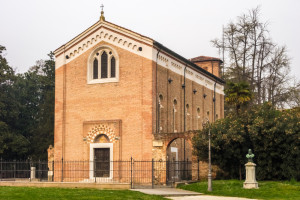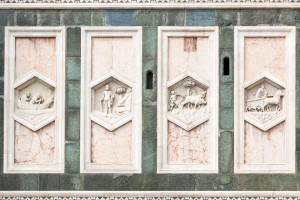 Who Is Giotto? A Brief Look at the Artist
Who Is Giotto? A Brief Look at the Artist
Giotto di Bondone is regarded as the most celebrated Italian painter of the 14th century and one of the most influential artists of the middle ages. He is considered the father of modern painting, having influenced the likes of Michelangelo, Masaccio, and Raphael. Giotto was born either in 1266/1267 in Vespignano, near the city of Florence in Italy and died in 1337. He spent his early years as an apprentice to a great Florentine painter named Cimabue. Legend has it that his master discovered the genius of the young man when he came across his lifelike paintings of sheep and took him under his wing. He worked throughout Italy visiting places such as Padua, Rome, and Naples. However, it was in Florence where most of his time was spent.
The focus of Giotto’s career was almost exclusively on frescoes. Fresco is a technique where a painting is done on wet plaster so that it becomes fixed when the plaster dries. He had an unparalleled understanding of human emotion which he transferred to his work with accurate detail. He was a revolutionary in his work at the time. He shifted from the Byzantine style into realism which he achieved through three-dimensional expressions. Due to his artistic skill, the Italian artist is considered influential in the birth of the Renaissance.

Giotto’s Masterpieces
Although few of his works have survived, Giotto worked on many great paintings. Some of his most renowned works include “The Stigmata of St Francis” which can be found in the Louvre, Paris and “The Crucifixion“ in Rimini at the church of St Francis. However, his most famous work is the decoration of the Arena Chapel in Padua. His paintings of the Virgin and angel Gabriel are most celebrated masterpieces.
Giotto’s work was not well documented and as a result, attributions remain problematic and often speculative. One of his earliest and most notable paintings of St Francis at the chapel of St Nicholas in the Church of St Francis remains widely debated today.
Which of Giotto’s Works Are Really His?
Evidence suggests that he worked at Assisi although there is no compelling proof that the paintings belong to him. Some scholars have attributed them to one of his unnamed students, citing that the paintings do not appear to have been done by one hand. There are those who have also stated that the style of the cycle at St Francis differs with that of the frescoes at the Arena Chapel. However, Giorgio Vasari, one of the most authoritative historians attributed the paintings at the church of St Francis to Giotto. It is also questionable who the unnamed painter was and why there is no other work attributed to them. This person must have had the inspiration of Cimabue, Arnolfo di Cambio, and Pietro Cavallini which points back to Giotto. Besides, the gap in time between the painting of the Assisi frescoes and the frescoes at the Arena could be greater than thought. This could have been sufficient for him to adapt a different style. Even more interesting is a report by The Telegraph in November 2012 which stated that experts found the initials GB after the restoration of the paintings at Assisi which could prove that Giotto Bondone was indeed the painter.


